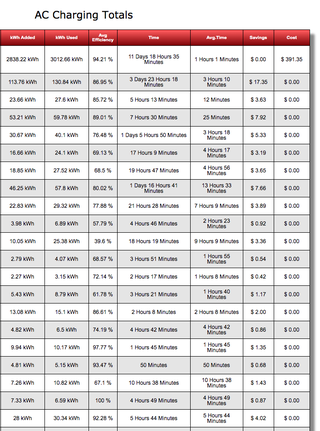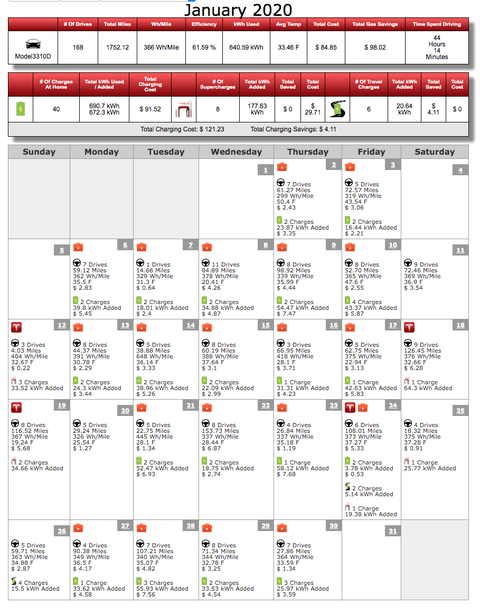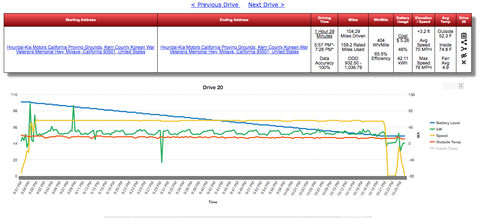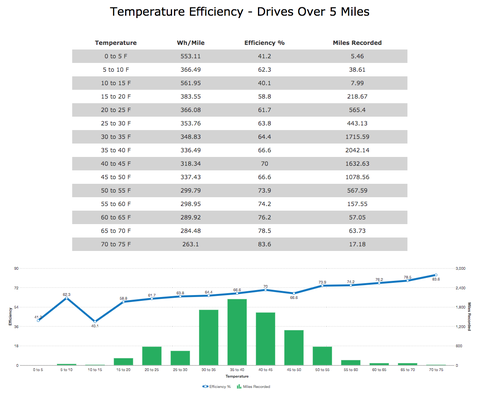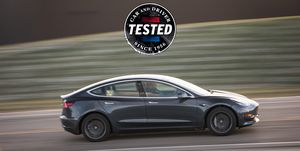Modern cars are constantly collecting data and slinging it back to their makers. What, you thought automakers were installing high-speed connections just to provide rolling Wi-Fi?
Tesla stands apart from the secretive automaker norm by being more forthright about what’s being collected and allows anyone to harness the data coming out of their car. Although Tesla provides access to some of this via its app—things like real-time location, speed, and cabin temperature—it doesn’t directly provide any way to aggregate it. This has cleared the way for third parties such as TeslaFi, which has become the go-to software for the enthusiastic Tesla community.
After buying a Model S in 2016, Chicago-area resident James Decker, a self-professed “data geek,” started tinkering with the available data streaming from his car. After about a month, he had the bones of TeslaFi.com together and posted it on a popular Tesla owners’ forum, where he quickly signed up 100 users. Two years later, TeslaFi became his full-time job, which he now runs with one employee.
Today, more than 11,000 owners around the world, including us for our long-term Model 3, pay $5 a month or $50 per year to use Decker’s software to dive into the nuanced particulars of their cars and driving habits. It of course tracks the obvious stuff: speed, distance, driving efficiency; but it also, by using GPS location, layers in other factors such as elevation change and weather conditions.
One of the things that can be extremely difficult to decipher on EVs is charge efficiency, because while measuring energy coming out of the wall may be straightforward, how much is lost on the way to the battery pack is typically a mystery. TeslaFi tracks every charge, noting how many kilowatt-hours came from the wall and how many made it into the pack, as well as providing user-customizable cost comparisons with gasoline-burning cars. Charging efficiency varies greatly depending on the source: our 240-volt Tesla Wall Connector at our office is averaging 94 percent efficiency, while we’ve seen as little as 58 percent of the energy make it into our Model 3 when plugging into a standard 120-volt home outlet. DC fast charging at one of Tesla’s 480-volt Superchargers is the most efficient, however, with TeslaFi regularly citing figures in the 97 to 100 percent range.
Below is the calendar view for our Model 3 during the month of January, when we totaled 168 drives and 1752 miles. Each day has a summary of miles driven, efficiency, and charging; clicking in to a particular day brings up a more detailed look at the car’s travels.
Here’s the detailed view on one particularly important drive during our comparison test of the Tesla Model S Performance vs. Porsche Taycan Turbo S: The 100 miles at 75 mph we did to compare highway efficiency and range.
Decker allows the TeslaFi community to upvote potential new features, which has led to things such as a battery report that estimates the car’s degradation in range over time. Even more powerful is comparing it to other owners’ cars with similar mileage across the TeslaFi network. As our long-term Model 3 is approaching 10,000 miles, TeslaFi predicts that we’ve lost about six miles, or 2 percent, of range, putting us smack dab in the middle of 256 other similar Model 3s.
Another view that we’ve found interesting is one that takes the efficiency of individual drives and buckets them in five-degree temperature ranges. For locations like our home state of Michigan, which has wide climate swings, this allows a look at how efficiency varies with temperature, and our Model 3’s has dropped by more than 20 percent in cold temperatures. This is due to a number of factors, including climate-control use, driveline inefficiencies, and that regenerative braking is limited when the car is cold.
Decker tells us that one of the most popular features is the software tracker, which permits users to see what version of software others in the TeslaFi community are running. This allows the rabid to sniff out new software that’s about to be released, as Tesla typically first deploys new code only to a small group of vehicles and then makes necessary tweaks before rolling it out across the wider network.
As our vehicles continue to get increasingly connected and throw off more and more data, we hope that automakers follow Tesla’s lead in allowing owners to harness their data, and that there becomes a TeslaFi-like service for every brand’s vehicles.
Source: Motor - aranddriver.com



